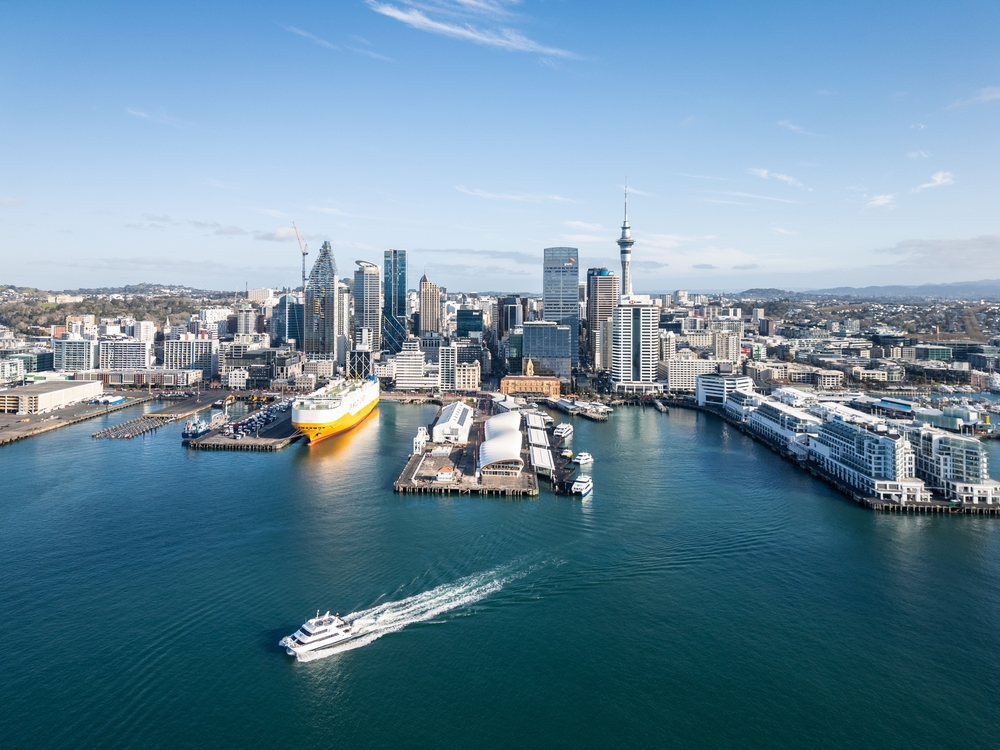New Zealand’s 2025 budget bets big on business tax cuts

With softening economic forecasts and mounting debt, the 2025 Kiwi budget seeks to catalyse private-sector investment while tightening welfare and retirement savings frameworks.
While New Zealand’s 2025 budget prioritises business-friendly tax incentives to stimulate long-term growth, there are concerns about underlying spending and rising unemployment.
Central to this year’s budget is a NZ$1.7 billion annual tax break for businesses, dubbed the Investment Boost. This means eligible enterprises can claim an immediate 20 per cent tax deduction for the cost of new business assets.
The policy, aimed at lifting GDP by 1.0 per cent and wages by 1.5 per cent over two decades, underscores Wellington’s attempt to balance near-term fiscal pressures with a structural push to revive productivity.
As KPMG New Zealand noted in a statement, “the Investment Boost announcement will also be of interest to many infrastructure businesses and will hopefully encourage more investment in assets and technology.”
The flagship Investment Boost initiative, effective immediately, is designed to support business investment to drive economic growth. While depreciation rules remain in place, the 20 per cent upfront tax deduction aims to accelerate spending, with the government betting the short-term fiscal cost will yield higher tax revenues over time.
“The Investment Boost will allow hard working tradies, farmers and small business owners to immediately deduct 20 per cent of the cost of new machinery, tools and equipment from their taxable income – encouraging investment in assets that increase productivity and help lift wages,” New Zealand’s Prime Minister, Christopher Luxon, said in a statement.
However, the question is whether the measure will deliver meaningful productivity gains, given New Zealand’s persistent underinvestment in research and development.
As PwC New Zealand outlined, Kiwi Treasury forecasts reveal a challenging road ahead, with real GDP growth expected to peak at 3 per cent in 2027, before tapering to 2.6 per cent by 2029. Unemployment is projected to climb to 5.4 per cent in 2025, the highest level in more than a decade, while wage growth slows from 3.9 per cent to 2.6 per cent in the coming year.
“This budget is focused on economic growth to help Kiwis get ahead. It is only through a strong economy that we can create jobs, deal with the cost of living and afford the schools, hospitals and police Kiwis deserve. This is a responsible budget that secures New Zealand’s future,” said Prime Minister Luxon in a statement.
The Kiwi government has positioned the budget as a path to stabilise the economy. It includes NZ$6.7 billion in new operating spending, partially funded by NZ$4.9 billion in savings, with NZ$6.8 billion in capital investments targeted at defence, health, education and infrastructure initiatives.
Complementing the tax break is an NZ$85 million allocation to establish Invest New Zealand, a foreign investment agency announced earlier this year to attract offshore capital. The approach reflects the New Zealand government’s ambition to position the country as a destination for global investors, particularly in sectors like clean energy and advanced manufacturing.
In a move to bolster national savings, the budget overhauls the KiwiSaver scheme, raising default employer and employee contributions from 3 per cent to 4 per cent. The changes expand eligibility to 16- and 17-year-olds but halve government contributions and eliminate them entirely for individuals earning more than NZ$180,000 a year.
The government’s headline operating balance (OBEGALx) is projected to return to a slim surplus by 2029, although net core Crown debt will rise to 46 per cent of GDP in 2028. This is a level not seen since the aftermath of the 2007/8 global financial crisis. The deterioration in underlying economic performance can be attributed to weaker-than-expected tax receipts and higher borrowing costs.
As PwC figures show, education receives a NZ$2.5 billion injection in this year’s budget, including NZ$646 million for students with additional learning needs and NZ$712 million for new classrooms.
Health funding includes NZ$1 billion for hospital upgrades and NZ$91 million to extend prescription durations, while NZ$774 million is allocated for survivors of state care abuse. Defence sees NZ$4.2 billion for capability upgrades and NZ$200 million is earmarked for co-investment in gas fields, signalling a pragmatic shift in energy policy.
The budget forecasts a 6.7 per cent peak in house price growth by 2027, fuelled by looser credit conditions and immigration-driven demand. Meanwhile, welfare reforms tighten eligibility for youth unemployment benefits and modestly increase payments for low-income families, a balancing act that has drawn praise from fiscal conservatives but criticism from social advocates.
The 2025 budget reflects New Zealand’s desire to prevent austerity measures down the track and at the same time, support future economic growth.
While business groups have welcomed the Investment Boost as a catalyst for growth, the nation’s reliance on debt-fuelled spending leaves little room for further economic shocks.


